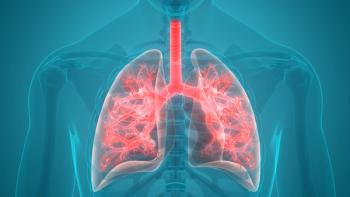
Nearly One-Fourth of DLBCL Cases May Be Attributable to Obesity in Young Adulthood, Says Study
Across all measures, researchers found that body mass index in young adults had the strongest association with the risk of non-Hodgkin lymphoma (NHL), estimating that 23.3% of diffuse large B-cell lymphoma (DLBCL) cases and 11% of NHLs overall can be attributed to obesity.
Nearly 1 in 4 cases of the most common subtype of non-Hodgkin lymphoma (NHL) may be prevented by tackling obesity in young adulthood, suggest findings from a recent
The 20-year study, which collected data from 6 different cohorts around the United States, revealed that across the collective group of tumors classified as NHL, both weight and height could have an impact on the risk of disease. The researchers underscored the relevance of their findings, noting that while over 100,000 cases of NHL and over 25,000 NHL deaths are expected in 2022, a clear understanding of risk factors is lacking.
“Young adult BMI [body mass index], in particular, was a strong risk factor for [diffuse large B-cell lymphoma]. Individuals who had an obese young adult BMI, and remained obese throughout adulthood, had an almost threefold higher DLBCL risk compared to maintenance of a lean body mass throughout adulthood,” the researchers detailed, noting that further studies confirming their finding is needed. “Though adult weight loss is a rare occurrence, our results suggest that DLBCL risk is attenuated in participants who moved to a lower average BMI in middle/later adulthood.”
Across all measures included in the study, the researchers found that BMI in young adulthood had the strongest association with NHL risk, estimating that 23.3% of DLBCL cases and 11% of NHLs overall can be attributed to the measure. They did not observe differences based on gender, and they did not have adequate data on risk based on race.
The researchers also found that height played a role in NHL risk, with an overall association as well as an association with more common NHL subtypes, such as DLBCL, and with rarer subtypes like mantle cell lymphoma. The measure had the strongest association with B-cell NHLs among Black patients, with a hazard ratio (HR) of 2.06, and was also stronger for Asian/American Indian/Hawaiian patients (HR = 1.65) compared with White patients (HR = 1.13), who had the weakest association.
“Future studies are also needed to expand upon our findings among non-White participants, including the observed differences for height and NHL risk,” highlighted the group.
“Though the present study included a substantial number of non-White participants overall, the sample sizes in key groups, such as overweight/obese, Black, Hispanic, or Asian/American Indian/Hawaiian young adults, were too small to study. In part this was due to unavailable data for some of the body size measures or NHL subtypes.”
The group did not find any other body measures significantly associated with NHL overall or subtypes of the disease. Waist circumference had a positive, albeit weak, association with NHL overall (HR = 1.05), although they noted no clear patterns by waist circumference categories were observed.
DLBCL was the only subtype associated with predicted fat mass, and the amount of weight change between young and later adulthood showed no associations with NHL or any subtype.
Reference
Teras LR, Bertrand KA, Deubler EL, et al. Body size and risk of non-Hodgkin lymphoma by subtype: a pooled analysis from six prospective cohorts in the United States. Br J Haematol. Published online March 29, 2022. doi: 10.1111/bjh.18150.
Newsletter
Stay ahead of policy, cost, and value—subscribe to AJMC for expert insights at the intersection of clinical care and health economics.















































